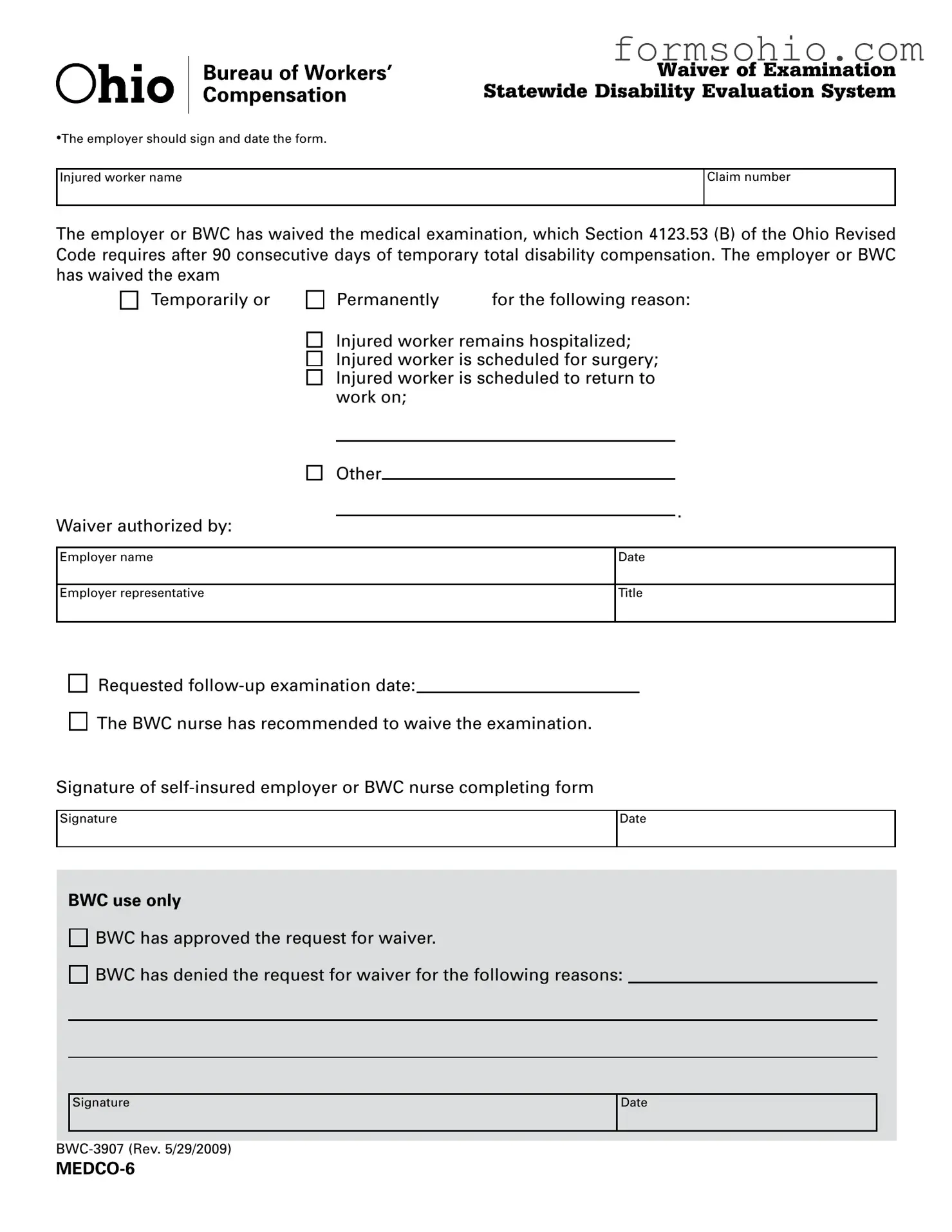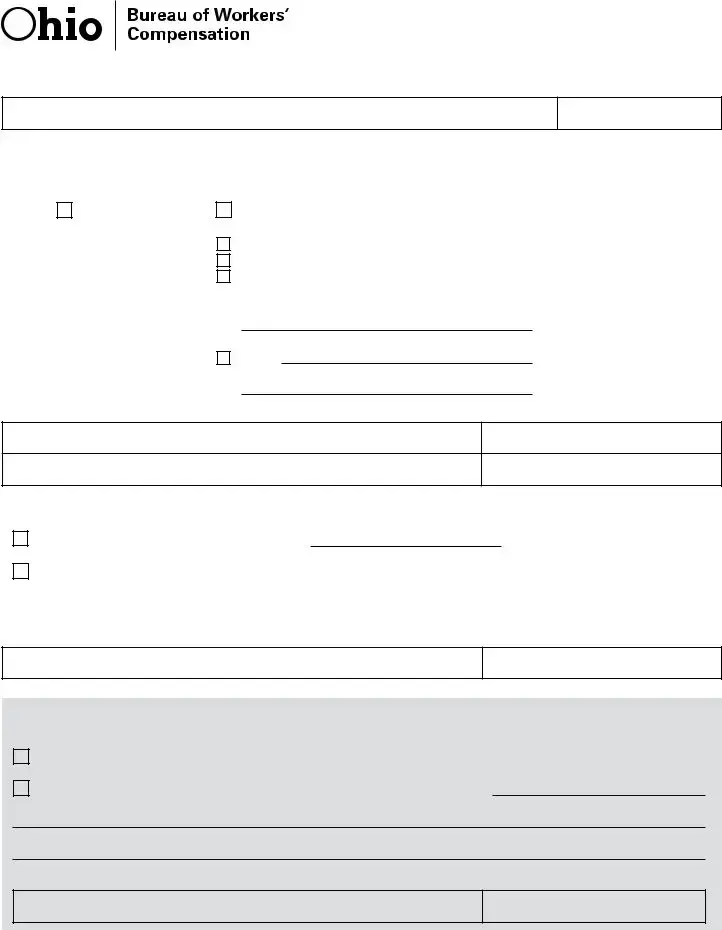Completing the Ohio BWC 3907 form is a crucial step in ensuring that injured workers receive the benefits they deserve. However, several common mistakes can hinder this process. Awareness of these pitfalls can help streamline the submission and approval of waivers.
One frequent error occurs when the employer fails to sign and date the form. This signature is essential, as it verifies that the employer acknowledges the waiver of the medical examination. Without this crucial step, the form may be deemed incomplete, resulting in delays or denials.
Another mistake involves not providing a clear reason for the waiver. The form allows for several options, such as hospitalization or a scheduled return to work. If the employer or BWC does not specify the reason, it may lead to confusion and potential rejection of the waiver request.
Additionally, some individuals neglect to include the requested follow-up examination date. This date is important as it helps the BWC track the injured worker's progress and ensures timely evaluations. Omitting this information can create complications in the review process.
Moreover, failing to include the name and title of the employer representative can result in complications. The BWC needs to know who authorized the waiver, and without this information, the request may not be processed correctly.
Another common oversight is when the BWC nurse's signature is missing. The form requires the nurse's signature to confirm that the examination waiver is recommended. Without this signature, the request may not carry the necessary weight for approval.
Finally, individuals sometimes overlook the importance of reviewing the form before submission. Errors in any section can lead to delays or denials. Taking the time to double-check the information ensures that the form is complete and accurate.

